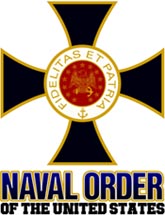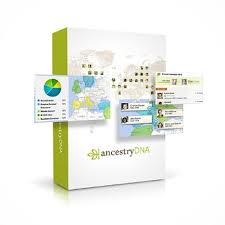Sea Captains: San Francisco 1800s
Edward King
San Francisco's First Harbormaster
To California by Sea, James Delgado (pp 102-103) ". . . The Legislative Assembly of the District of San Francisco considered the appointment of a Harbormaster during two weeks of meetings commencing on March 17, 1849.
On April 3, 1849, it passed a law establishing the office and appointed Captain Edward A. King to the position. The assembly quickly moved to inform the newly appointed Harbormaster of his responsibilities: In view of the approaching bad weather and heavy winds, as well as for the safety of private property and the promotion of the commerce of the town, the Council request the Harbor Master to have all vessels, not receiving or discharging cargoes, removed to Wood Island or to the south side of Rincon Point.
San Francisco Bay. 1899.

"The first ordinance passed by the newly incorporated City of San Francisco regulated the duties of the Harbormaster. Passed by the board of aldermen on May 15, 1850, and hastily approved by Major Jonathan Geary on May 16, ordinance no 1. ordained that: The Harbor Master shall have all the power and authority vested in the corporation of this city, to regulate and control the position of the steamers, sailing vessels, or other craft lying and situated in the harbor.
He shall, whenever it is deemed advisable, cause any steamer, sailing vessel, or other craft to change its position . . . It shall be the duty of the Harbor Master to keep an open and free passage to all wharves of the city.
San Francisco's First Harbormaster
"The Harbormaster was given the power to call upon the 'mayor, marshal, and police of the city, to aid and assist him.' When the appointment of Captain King was approved by the military governor of California, Brevet Brigadier General Bennett Riley, on June 19, 1849, the Harbormaster was ready for business."
Daily Alta California, November 7, 1849
King ordered all 'merchant ships in this harbor will clear hawser on or before the 15th instant, and cockbill their lower yards.' Clearing the crowded anchorage, replete with ships tangling in one another's moorings and rigging, was an impossible task for one man, so King's wise decision to order each master or owner to attend to his own vessel solved the problem for the entire harbor.
Edward A. King served as San Francisco's appointed Harbormaster through the end of 1849.
(Editor's Note, the following article, taken from the January 31, 1850 issue of the Daily Alta California, indicates that Edward A. King was still Harbor Master of the Port of San Francisco.)
January 31, 1850, Daily Alta California, San Francisco
THE GOLDEN EMIGRATION.
Through the courtesy of Capt Edw. A. King, Harbor Master, we are enabled to present the following statistical intelligence, which will demonstrate more faithfully by figures than we are editorially capable of conveying to the mind of the reader, by a more familiar process of reasoning, the expanding importance and unexampled increase in business, population and wealth of the "new Eureka State."
These statements are from the records of the Harbormaster's office, and the official accuracy of each may therefore entitle them to the fullest credence. We are requested to state for the information of passengers daily arriving at this port, as also for the benefit of the emigrants starting out from the east upon their California adventure, that intelligence can always be obtained upon application at the office of the Harbormaster, of persons who have arrived by sea, at this port. From the 12th day of April, 1849, to January 29th, 1850, inclusive, the passenger arrivals at the port of San Francisco, by sea, is as follows:
| American | 29,847 males | 919 females |
| Foreign | 8,620 males | 502 females |
| Total | 38,467 males | 1,421 females |
Total males and females, 39,888. These have arrived by sea in eight hundred and five vessels, to wit:
| American | 487 |
| Foreign | 318 |
| Total | 805 |
The number of ships is exclusive of army and navy vessels, and steamers, which have arrived during the above period.
| American | 22,429 |
| Foreign | 55,809 |
| Total | 284,238 |
The number of ships is exclusive of army and navy vessels, and steamers, which have arrived during the above period.
The Sea Chart
The Illustrated History of Nautical Maps and Navigational ChartsJohn Blake
The sea chart was one of the key tools by which ships of trade, transport and conquest navigated their course across the oceans. John Blake looks at the history and development of the chart and the related nautical map, in both scientific and aesthetic terms, as a means of safe and accurate seaborne navigation. This handsome work contains 150 color illustrations including the earliest charts of the Mediterranean made by thirteenth-century Italian merchant adventurers, as well as eighteenth-century charts that became strategic naval and commercial requirements and led to Cook's voyages in the Pacific, the search for the Northwest Passage, and races to the Arctic and Antarctic.
The Authority to Sail: The History of U.S. Maritime Licenses and Seamen's Papers
Robert Stanley Bates, George Marsh (Editor), John F. Whiteley (Forward) (Batek Marine Publishing, 2011; Nominated in 2012 for a Pulitzer Prize)
This book depicts important aspects of our maritime history as a result of original research done by the author, Commodore Bates, the holder of an unlimited master's license who has enjoyed a distinguished fifty-year career in both the Coast Guard and the American Merchant Marine.
The U.S. Coast Guard issues all Captain Licenses for U.S. Ports.
Note: Other countries have different regulations, i.e. the RYA (Royal Yachting Association), conducts certification for Britain and Ireland. As of 2011, they did not recognize the USCG certification; certification through their courses was required.Master Unlimited is a licensed mariner in ultimate command of a vessel any gross tons. The captain is responsible for its safe and efficient operation, including cargo operations, navigation, crew management and ensuring that the vessel complies with local and international laws. All persons on board, including officers and crew, other shipboard staff members, passengers, guests and pilots, are under the captain's authority and are his or her ultimate responsibility. The STCW defines the Master as Person having command of the ship.
The Sea Chart
The Illustrated History of Nautical Maps and Navigational Charts
John Blake
The sea chart was one of the key tools by which ships of trade, transport and conquest navigated their course across the oceans. Herein is a history and development of the chart and the related nautical map, in both scientific and aesthetic terms, as a means of safe and accurate seaborne navigation. 150 color illustrations including the earliest charts of the Mediterranean made by 13th-century Italian merchant adventurers, as well as 18th-century charts that became strategic naval and commercial requirements and led to Cook's voyages in the Pacific, the search for the Northwest Passage, and races to the Arctic and Antarctic.
Get Your Captain's License. Fifth Edition
Charlie Wing
Considered the quickest, easiest, and least expensive way to prepare for the U.S. Coast Guard captain's ratings exams required for anyone who takes paying passengers on a boat, and useful for serious boaters who want to save money on insurance. 350 pages of seamanship and navigation tutorials. More than 1,500 questions and answers from the Coast Guard exams. Includes an interactive CD-ROM with all 14,000 questions and answers in the USCG database, so you can take an unlimited number of practice exams











 Copyright ~ 1998-2018.
Copyright ~ 1998-2018. 